Text
Journal 7
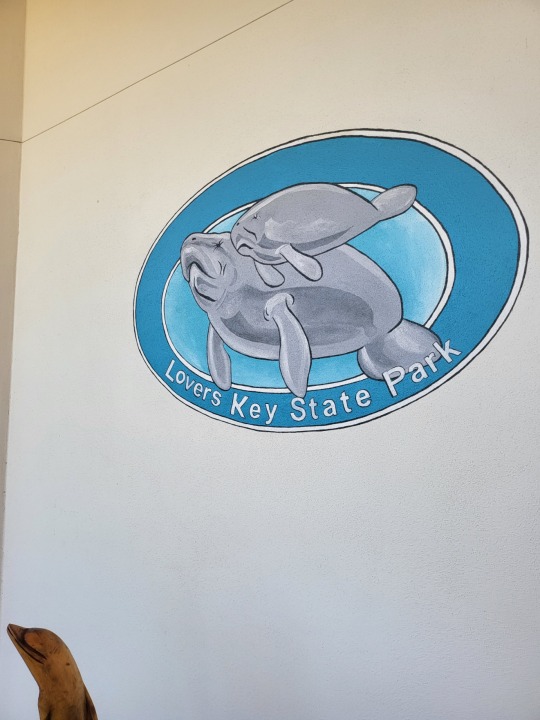
Lovers Key State Park is an estuary. An estuary is an environment where fresh water mixes with salt water. Small fish will seek shelter in estuaries to lay their eggs, and birds like to create their nests in estuaries. Lovers Key State Park also consists of four islands. The islands are called Inner Key, Long Key, Black Island, and Lovers Key. Black Island got its name from a pirate called Black Augustus. While Black August was running from the authorities, he successfully evaded them by hiding on the island. Lovers Key got its name because before their were any bridges to the island, couples would take boats their for a romantic private getaway.
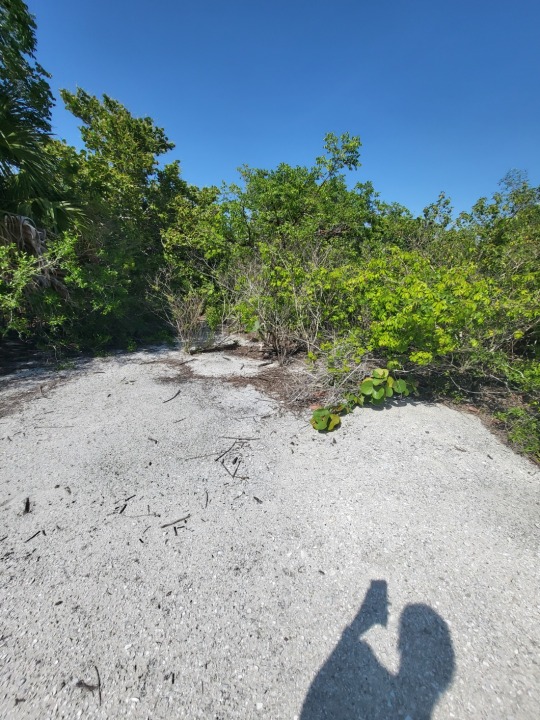
Black Island starts off as a tropical hammock ecosystem. This type of ecosystem allows plants to be able to grow closer to the water. For a lot of these plants, if they did not have the shade that the tropical hammock provides, then they would not be able to grow on the island. It also consists of a group of plants called antisocial plants. One example of an antisocial plant is a Spanish Bayonet. Antisocial plants are unique because they are covered in spikes that prevent pests from being able to eat their leaves.
As you walk along Black Island, the ecosystem shifts into a coastal shrub ecosystem. This was created when the island was dredged. When it was dredged, all of the sand was piled together, and it raised the elevation of the island, which in turn, changes the ecosystem. When the island was dredged, it was also deigned to be a replica shell mound. In particular, it is meant to resemble a Calusa Shell Mound. Shell mounds are important because they protect the inland from flooding.

Black Island is also covered by mangroves. Mangroves are important because their long roots provide shelter for many different types of animals. For example, fish will hide among the roots to prevent preying birds from swooping down and grabbing them. Black Island has all three types of mangroves, black mangroves, red mangroves, and white mangroves. Black mangroves can be found closest to the water, while white mangroves are the farthest away from water. Black Island is also covered in strangler fig trees. Strangler fig trees are unique because their seeds attach themselves to the middle of another tree, and then will grow in both directions. Luckily, they do not harm the tree they attach themselves too.
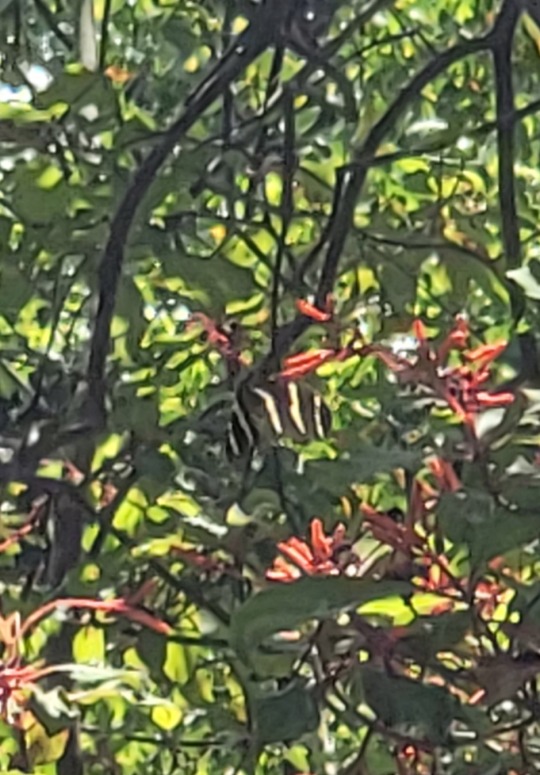
Black Island is also home to a butterfly garden. The plants in the garden is all native plants, and I saw many different species of butterflies while I was walking through it. This is a good sign because butterflies are an indicator of a healthy environment. One of the butterflies that I saw was a Zebra Butterfly. These butterflies can be identified by their black wings with yellow stripes. This was very special to me because the Zebra Butterfly is Florida's state butterfly. I have been developing a real sense of place in Florida since I moved here, and it felt really good to have the state butterfly around me.

I also spotted a Gulf Fritillary while walking around the butterfly garden. These can be identified by their red and orange wings with spots all over. Orange has always been my favorite color, so I immediately was attracted to the Gulf Fritillary. Orange butterflies are also the first thing I think of when I think of a butterfly.
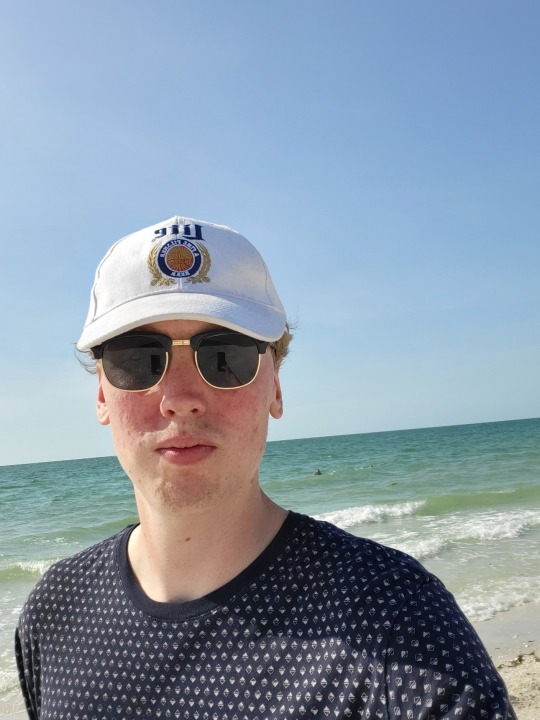
The main beach on the state park is located on Lovers Key. Beach habitats are important because they protect the inland from erosion. They are also good for the areas economy. Beaches, in particular Florida's beaches, attract tourists from all over. If the beaches start to degrade or become filed with trash, people will stop wanting to visit, and Florida's economy could crash.
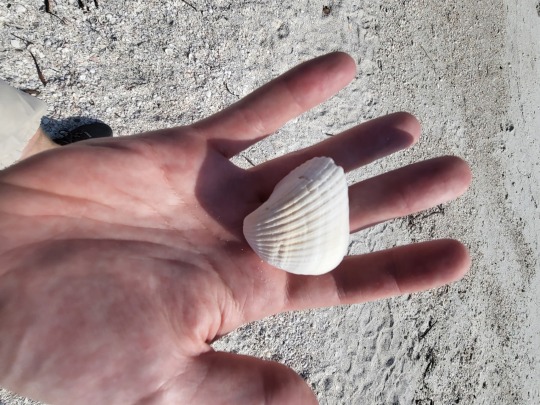
Walking along the beach, I spotted many different kinds of shells. One type of shell that I saw was the Cockle Shell. This shell is unique because they usually will take the shape of a heart. They also thrive on sandy beaches. This was special for me to find because I remember always collecting Cockle Shells whenever I visited Florida beaches as a child.
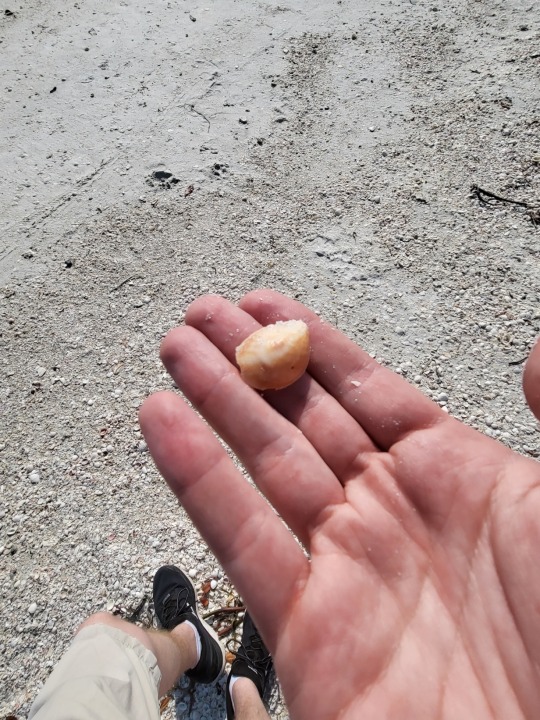
I also found many pieces of from conch shells. Conch shells are very common to Florida beaches, but they usually break apart while they are being washed onshore. These are special to me for a couple multiple different reasons. Conch shells are bright orange, and they are also Florida's state shell. Additionally, whenever I see one, it always reminds me of the time I actually found a completely intact one when I came to the beach with my mom.
Photo Credit: All of the photos in this post were taken by Bradley Hoberman.
0 notes
Text
Journal 8
After reading my first journal, I realized that I have met my learning objective over the course of this semester. Before taking Colloquium, I had heard of sustainability, but I did not know what it actually meant. I knew that it had something to do with electric cars and helping manage climate change, but that was the extent of my knowledge. Luckily, I learned what sustainability actually meant through the many discussions we had in class. For example, I learned that the true definition of sustainability is meeting your needs without compromising the needs of future generations. This means that we should only use the amount of resources we need, not the amount we want. Currently, the majority of people on Earth are overconsuming. We would need three to five Earths in order to have enough resources to continue consuming in the way we are. This means that we need to start cutting back and developing more sustainable technology, so that way future generations can continue to enjoy the beauty of this Earth.
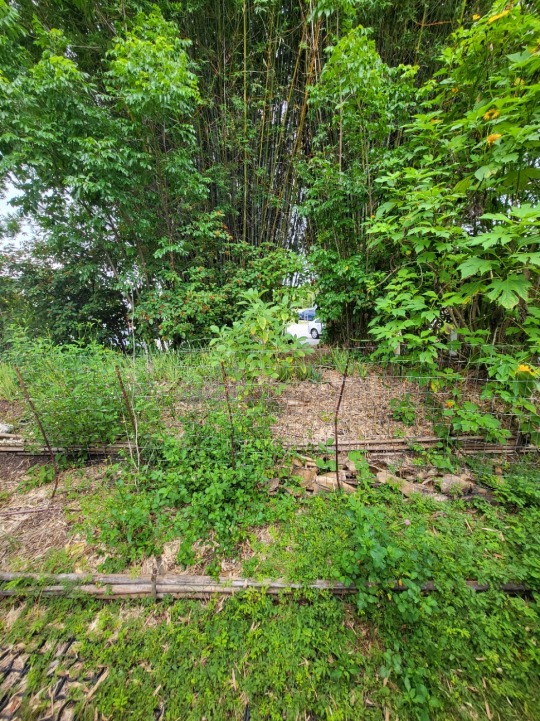
Photo Credit: Photo was taken by Bradley Hoberman.
After learning about the definition of sustainability in the classroom, the different field trips and my service-learning project really helped to show me the importance of sustainability. I did my service-learning project at ECHO Global Farm. ECHO teaches farmers from small villages sustainable farming techniques. This has shown me that sustainability is not just about preserving resources. Sometimes sustainability means being able to produce food in areas that do not have fertile soil. This way no one goes hungry. The techniques are also environmentally friendly, since they create little waste, and they do not pollute the environment.
Working at Echo reminded me a lot of when we went to the Food Forrest at FGCU. Both the Food Forrest and ECHO are sustainable farms, and even though I had been to ECHO multiple times, I felt more at home at the Food Forrest. After thinking about why that is, I have realized the reason I felt more connected to the Food Forrest is because I have developed a connection to FGCU. After looking back on the last couple of years, I realized that I have developed a sense of pride being a student at FGCU. I have fallen in love with the beauty of FGCU's campus, and I even feel like I am at home while I am walking around it. In fact, I would say that FGCU has even started to become my sense of place.

Photo Credit: Screenshot Captured by Bradley Hoberman from https://connect.pachamama.org/user/28248/courses
Finally, Colloquium has motivated me to reduce my ecological footprint. I have learned about climate change in many of the different classes I have taken in my life. However, when I learned about it in those classes, it has always just made me depressed. This is because after learning about climate change in my other classes, I always thought that the Earth was doomed. Those classes made it seem like humans have already done too much damage, and there was no way to save the Earth. It wasn't until I took the Awakening the Dreamer course that I realized that it is not too late. The Awakening the Dreamer course gave me a sense of hope. This is because the course made sure to emphasize that it is not too late to save the Earth, and it also even gave some suggestions as to how to change. This sense of hope has inspired me to make changes in my own life. Especially after finding out in class that my ecological footprint is around a 5.6. Overall, I am very glad that I took Colloquium, and I wish more colleges around the county would require their students to take a similar course.
0 notes
Text
Journal 6

Waste to Energy Facility is the general name for the facility we visited, but this facility actually goes by many names. Its official name is the Lee County Resource Recovery Facility. Some people also call it an incinerator, which it is actually inaccurate to this facility an incinerator. Finally, people in lee county have been known to call this facility the magic plant. They call it that because this is one of the only facilities that can make trash "disappear."
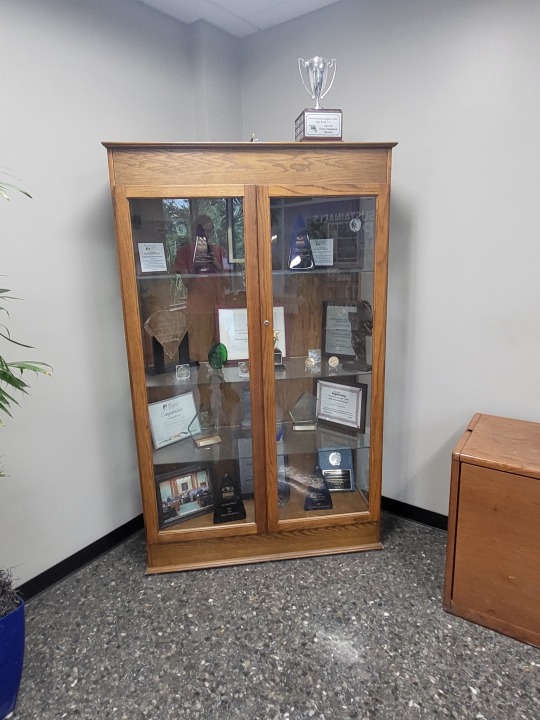
Lee County's Waste to Energy Facility was designed and built, and it is also still operated by a company called Covanta. Covanta is one of the many companies that are contracted to work for Lee County's Solid Waste Department, but Covanta also has held onto a contract the longest in Lee County's history. They were first contracted by Lee County in 1992.

The Waste to Energy Facility produces renewable energy. The facility burns trash in order to produce energy, which is actually one of the sources of renewable energy. The four sources of renewable energy are hydroelectric, solar, wind, and waste. The Waste to Energy Facility burns Lee County's waste in one of three boilers that heat up water to produce steam. The steam then rotates generators that produce electricity. The facility is capable of producing 60 megawatts a month, and the average household only uses about one megawatt a month. One person produces one ton a trash a year, so the facility will always have stuff to burn.

Even though the facility burns trash, it is not an incinerator. The difference between the Waste to Energy Facility and an incinerator is their air pollution control. Incinerators do not have any air pollution controls in place, and they can be one of the leaders in producing air pollution. The Waste to Energy Facility has a bag room that the smoke has to go through. The many bags that are hung up in that room filter the smoke and pulls out any toxins. In fact, the facility's air pollution control is so good that the facility can have up to five percent of its daily load be tires. You also do not see or smell any smoke when you are driving up to the facility.
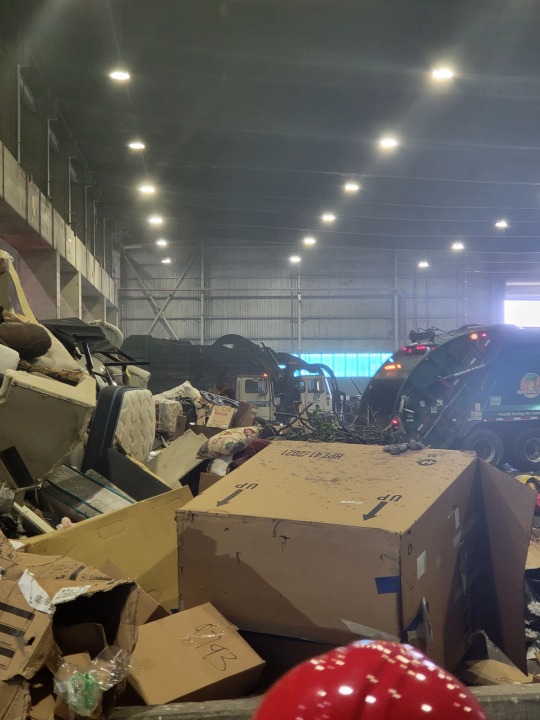
Lee County has become one of the leaders in sustainability in North America, and the Waste to Energy Facility plays a big part in that. The only waste that the facility produces is ash, which is easy to dispose of. Ash can even be put in piles that are easily compacted and able to be built on, unlike landfills. Lee County has also partnered with Hendry County. This is one of the few partnerships between two counties in the whole state. The two counties combine all their waste and send them to the Waste to Energy Facility. This waste includes household garbage, recyclables, yard waste, and bulk waste. The two counties have also built a transfer station between the counties. This transfer station allows trucks from Hendry County a chance to stop and drop off their load. The loads are then able to be combined into a larger load, so that way less fossil fuels are burnt since small trucks do not have to travel between counties.
Photo Credit: All of the photos in this post were taken by Bradley Hoberman.
0 notes
Text
Journal 5
Before the Food Forest was opened, FGCU had many different short-term gardens. After students kept petitioning for a long-term, the Food Forest was created in 2011. Students at the time, transformed a gravel parking lot into what is known as the Food Forest today. The Food Forest also promotes permaculture. Permaculture is an agricultural ecosystem that is self-sustaining. It adopts a lot of techniques that indigenous cultures have been using for generations. Permaculture minimizes the damage that is being done to the environment. The Food Forest is also open to the community, so everyone can come visit the forest, not just students. Everyone also has access to the Food Forest’s database where they can see what has been planted, and more about the different plants they have seen.
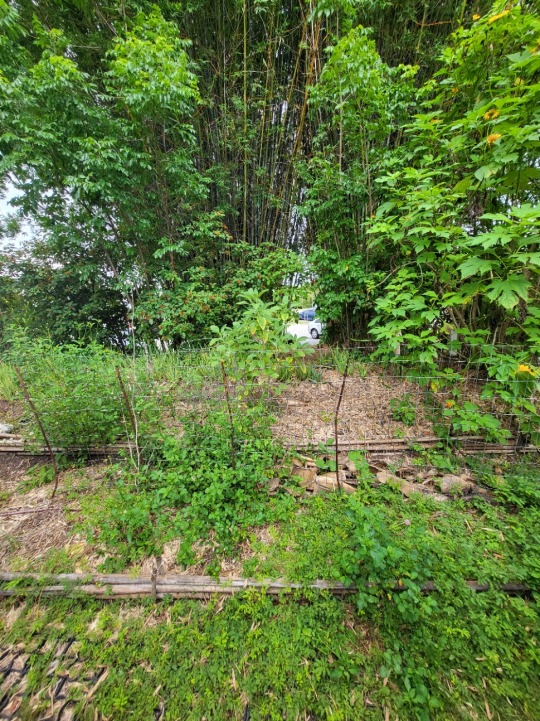
The Food Forrest utilizes a lot of Colombian bamboo. They use it as a natural barrier that protects the forest against wind. It is also planted because it ensures that the ground stays spongy, so it absorbs as much water as possible. They also use the cured bamboo to build different structures around the forest. Using bamboo is a permaculture practice in which it ensures that it will be around for at least five generations. They use natural resources for as much as the possibly can, but if it is not durable enough to last for a while, then the Food Forest will use other materials such as zip ties. Another permaculture process that the Food Forest uses is called chop and drop. This is when they will break down weeds and stomp it into the ground in order to fertilize the soil.
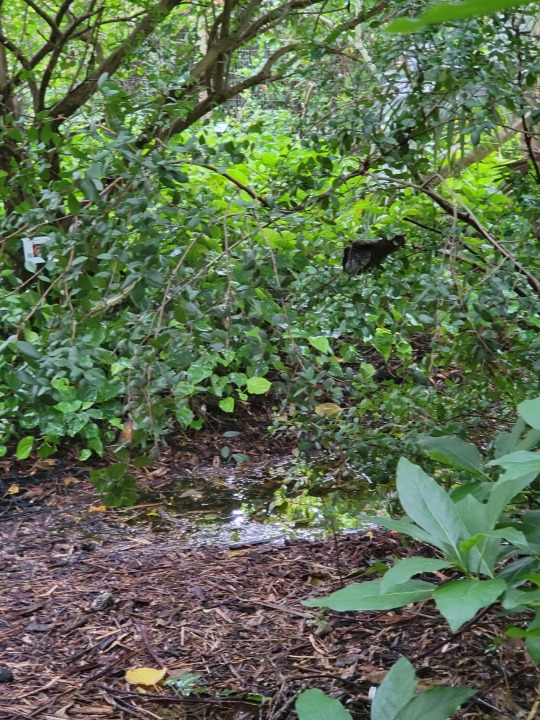
The grounds around the Food Forest are also constantly being watered, so that way all the plants stay healthy. This helps sustain all the old growth that is there, as well as different spices like ginger and red and yellow turmeric. Additionally, instead of using pesticides, the Food Forest utilizes leaf blowers to get rid of bugs like mosquitos. This ensures that they do not pollute the environment.
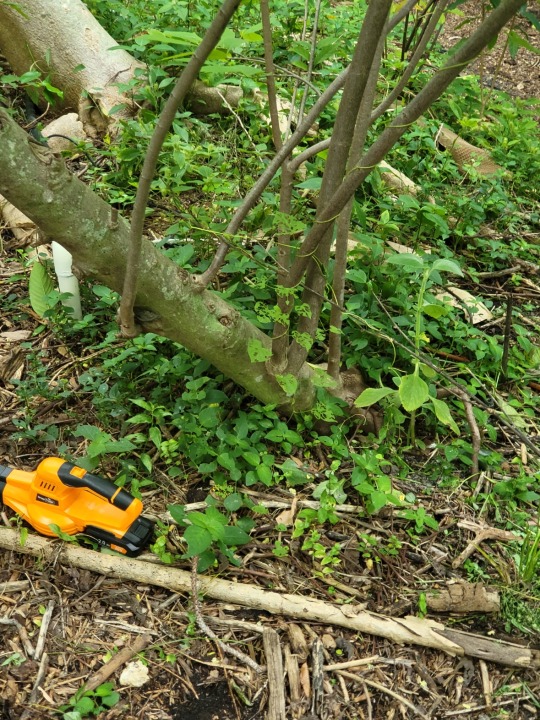
There are many different plants that grow on the grounds of the forest. For example, there are wax jambo trees. These trees produce fruits that are filled with water. Besides from fruits, they also grow macadamia nuts and avocados. They also have a cherry morello tree with other plants graphed to it. The cherry morello tree usually grows in higher altitudes in northern climates, but it is able to survive in Florida because of the other plants graphed to it. The grass that is planted around the trees also absorb water and force it into the ground for the trees to hydrate.

The food forest also consists of plants that are very beneficial to humans. For instance, instead of using bug spray, the leaves from some of the plants act as a natural repellent to mosquitos. They have also planted a jujube plant at the forest. If you rub the leaves from the jujube tree on a bug bite, it will relieve the itchiness.
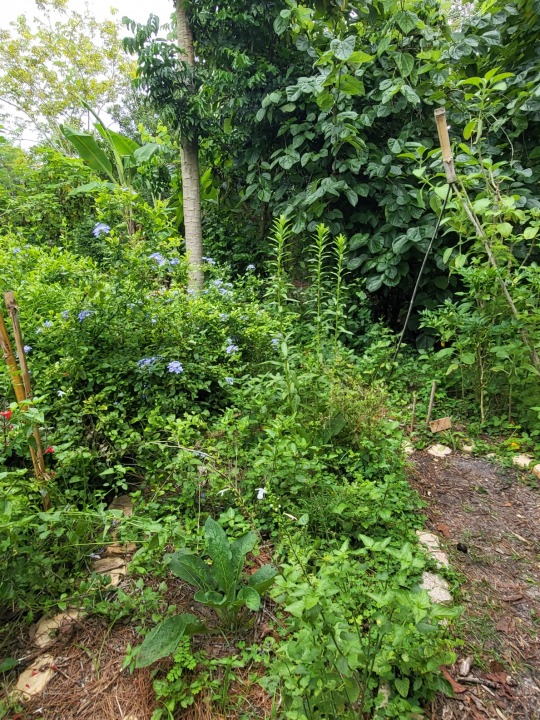
The Food Forest also consists of invasive plants. They have decided to plant them even though they are invasive because they have medicinal properties. For example, the circe plant from the Caribbean is invasive to Southwest Florida, but it is good for eczema and poison ivy. The Food Forest ensures that when they plant an invasive plant, the invasive plant will become naturalized and not affect the rest of the environment.
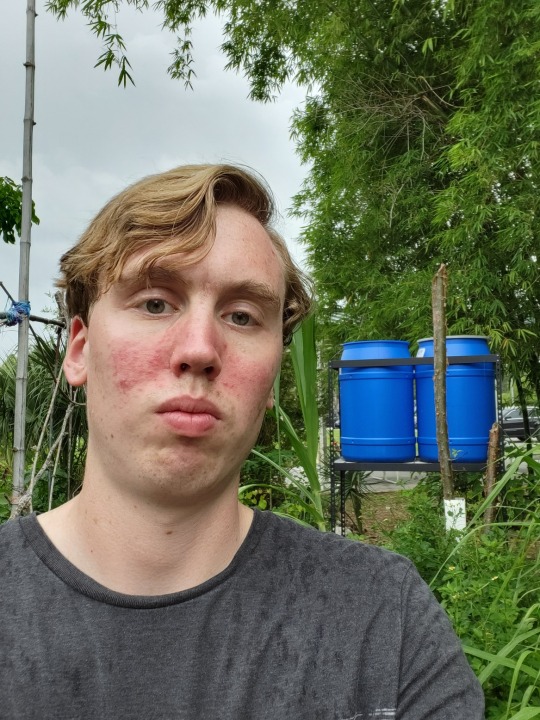
Visiting the Food Forest has reminded me of the concept of sense of place. For the past week, I have been volunteering at ECHO Global Farm, which is another self-sustaining garden. I have been enjoying the work I have been doing, and I can see the impact that it has been having, which brings me a lot of pride. Even though it brings me joy, being at the Food Forest felt a lot different. I felt more connected to my environment walking around the Food Forest. This is because that it exists on my campus, and it was created by my peers. The Food Forest is one of the many ways that FGCU puts its teaching into practice, and it gives me more pride when I tell people I go to school there.
Photo Credit: All of the photos in this post were taken by Bradley Hoberman.
0 notes
Text
Journal 4

Photo Credit: Screenshot Captured by Bradley Hoberman from https://connect.pachamama.org/user/28248/courses
The first stage of the Awakening the Dreamer course is called, "Where Are We?" This section left me feeling really depressed. I have had so many amazing experiences in nature, and it really pains me to know that those places may not exist anymore. For example, when I thought about a spring I went to in Florida, it immediately reminded me of a scene that the course showed about how when the sea level rises, Florida will become completely submerged. It has been very difficult to process that the state that I have spent a good portion of my life in may vanish because of our own selfishness. This section also opened my eyes when it came to social justice. I thought that we were doing better as a society when it comes to social justice, but when I think about if I would switch places with someone from another country, the majority of the time i would not switch. This shows that we still have a long way to go to achieve social justice.
The next stage of the course is called, "How Did We Get Here?" This section really made me rethink a lot the assumptions that I have. For example, I have always thought that humans have been living "together" with nature. I thought that even though we are constantly building homes and roads on other creatures habitats, we will still somehow sharing this planet with them. After taking this course, I realize that humans have taken this planet over for themselves, and that everything the Earth provides is solely for our benefit and consumption. I also had the assumption that we can just throw something away, and it will truly just vanish and not be anyone's problem. Instead, when we throw something away, we are just adding to the mountains of trash that is polluting the Earth. Finally, for a long time I truly thought that if everyone worked their hardest, and they would have opportunities for great success no matter what. Now that I am older, I realize that some people can put in the same effort as ten men, and they will still not be able to achieve their goals.
The third stage of the course is called, "What is Possible Now?" This is the part of the course where my mood completely shifted. That is because this stage showed me that there is still hope. This stage of the course did an excellent job at driving home the point that it is not too late. After everything that I have learned about climate change over the past couple years, I was starting to think that it is already too late. That was what made me so depressed at the start of the course. After watching the videos in the first stage, I was convinced that we have already done too much damage, and the Earth is doomed. This stage of the course reassured me that even though we may not have much time left, if we as a planet finally take a stand, we can still save the only home we have.
The final stage of the course is called "Where Do We Go From Here?" This part of the stage was very motivational. It pointed out that taking a stand is only half the battle. Not only do we have to take a stand to support sustainability, but we also have to ensure that we stay committed to that cause. I know that I have been guilty of wanting to make a change in my life, and for at least a couple weeks, I will feel very passionate about that change. However, after those couple weeks, I will become lazy, and I will revert back to my old ways. Now that I have become aware of this weakness, it is my duty to not become lazy and help change the way that we care for this planet.
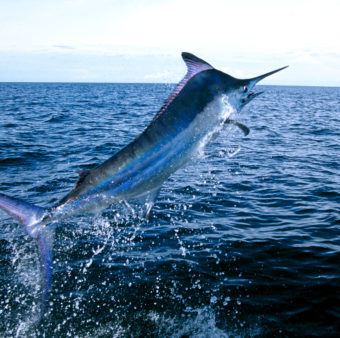
Photo Credit: https://wildoceans.org/wild-oceans-sets-new-5-year-course/
My wow moment occurred in the fist stage of the course. They showed a statistic that stated that 90% of the big fish in the ocean have disappeared. When this statistic appeared, I had to rewind the video because I thought that I originally read it wrong. Living so close to the beach, I constantly see fish swimming in the ocean and hear fisherman telling stories of the fish they have spotted. With how big the oceans are, I always just assumed that they will always be full of fish. After finishing the course and reflecting on that statistic, I now understand how this has become a reality. We do not only overconsume, but we also have been hunting these big fish for sport. Sometimes these bigger fish are used for their meat, but a lot of the time they are killed just so someone can get a trophy.
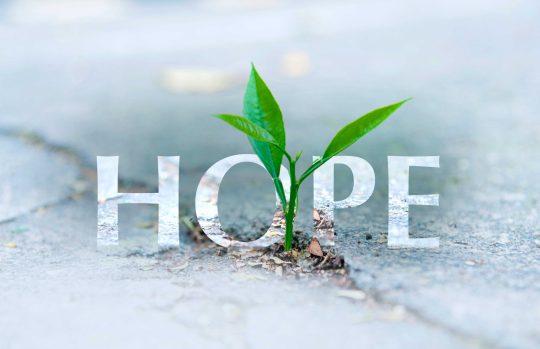
Photo Credit: https://springschristianacademy.ca/2020/11/06/hope/
I am very glad that I took this course. I thought that not only was this course extremely powerful, but it was also well structured. The start of the course made me really depressed, but that was what it was designed to do. In order for us to truly become devoted to saving the Earth, we have to be brought down to reality. We have to fully understand the impact humans have been having, and what will happen to our home if we do not change. The course then did an amazing job at pointing out that it is not too late. It not only showed, but it proved that there are people working hard everyday to fight for our Earth. It showed that even though we will have to make a lot of changes, if we can come together as a planet, we will be able to save this world, and everyone will end up living happier lives in the end. I believe that everyone should be required to take this course, or at least participate in something similar. This way we will all be awakened to our responsibility of saving this Earth.
0 notes
Text
Journal 3
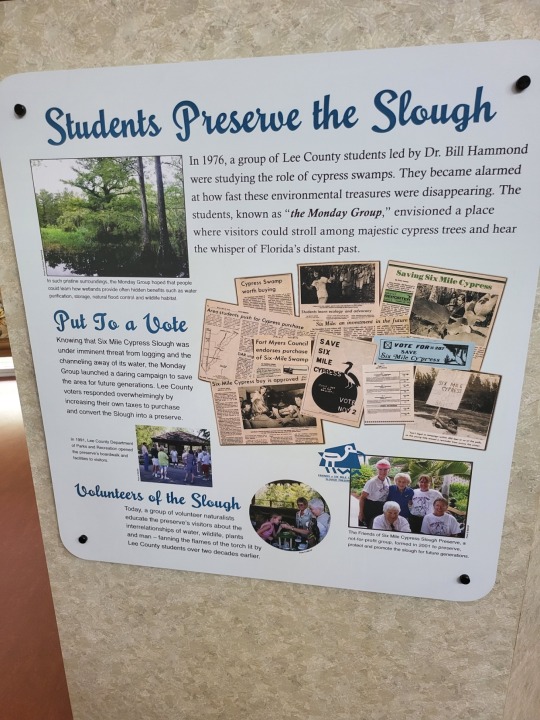
Six Mile Slough was deemed a concerned area in 1976. This was because of the amount of cypress and melaleuca trees that were being cut down. It was actually students that fought for the preservation of this land. The group of students were called "the Monday Group", and they always envisioned a place where people could take a peaceful walk while learning about all the benefits that cypress swamps has to offer. In 1991, the boardwalk at Six Mile slough was opened to the public. The boardwalk is 1.3 miles long, and the the whole preserve consists of 11 miles that covers 3,400 acres. Lee county actually now preserves 309 miles of sloughs.
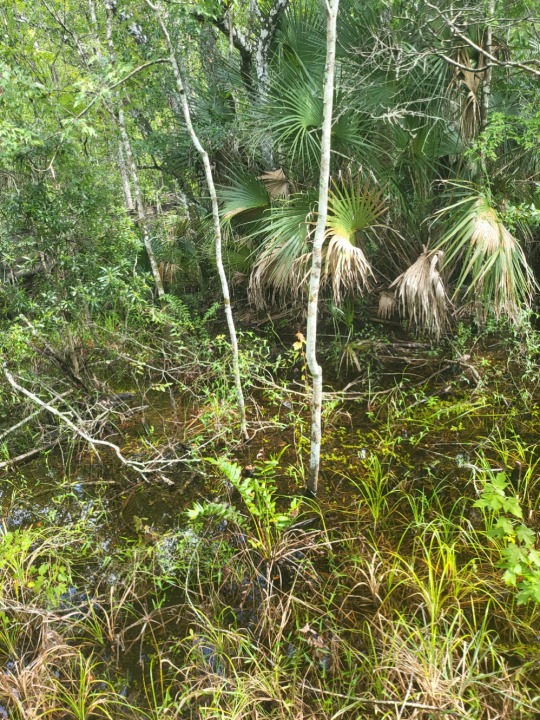
The start of the boardwalk is the highest elevation of the preserve. Even though it was the highest elevation, it had just rained, so the ground was already flooded. Being at a higher elevation, there were not as many cypress trees, but the trees did contain epiphytes, in particular lichen. Lichen clean the air to make sure that it is pure oxygen.
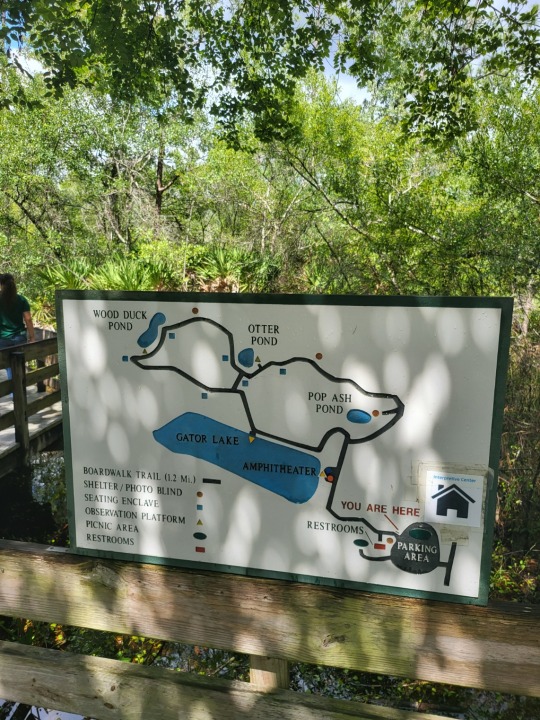
Our fist stop was at the Amphitheater that overlooked Gator Lake. Even though the shape of the body of water and how still the water is may make you think it is a lake, Gator Lake is actually a slow moving river. This is because a slough is actually a drainage channel. Six Mile Slough drains into the gulf.

After Gator Lake, we got to see Wood Duck Pond. Just like Gator Lake, Wood Duck Pond is also a slow moving river. In fact, despite being named ponds or lakes, all the bodies of water at Six Mile Slough are actually slow moving rivers. Additionally, the bowls that contain these bodies of water were created by either rain water erosion, fires, or alligators constantly digging into the ground.
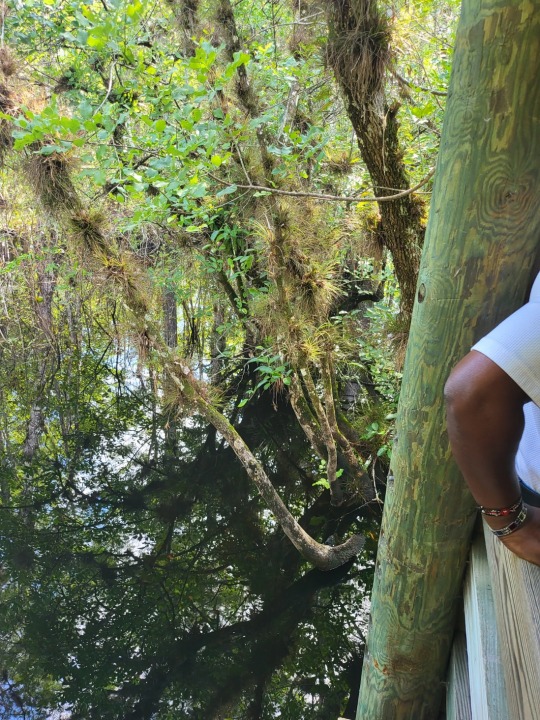
Wood Duck Pond is also a slightly lower in elevation that Gator Lake. This meant we got to see a lot more epiphytes. There were blood lichen, which only grow when the air is extremely clean, and there were also resurrection ferns. Resurrection ferns get their name because they are the first plant to grow back after the dry season.
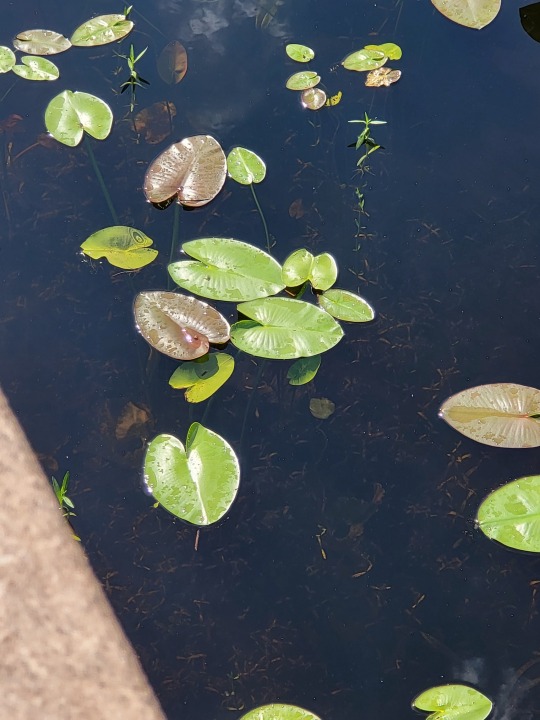
After Wood Duck Pond, we reached Otter Pond. The water in these ponds are all fresh water. Since only a small percentage of water on Earth is fresh water, the water is another reason why we need to preserve Six Mile Slough. In fact, Six Mile Slough is an ecosystem that provides many benefits. For example, the trees provide oxygen, and the plants in the water act as a natural filter.
Being in a natural filtration system reminded me of my sense of place. This is because my sense of place is being within mangrove trees, which is another kind of natural filtration system. One of the things that have always drawn me towards the mangrove trees is the fact that it is a self-sustaining system. These systems are very important not only to nature, but they are also very important to humans. This is why we have to ensure we preserve as many of these systems as possible. Being in another natural filtration system, made me think about my own ecological footprint, and how I need to do better at being environmentally conscious.

The final stop on our walk was at Pop Ash Pond. This pond was located in a slightly higher elevation. This means that there were more oak trees and less ferns. There also was a different kind of epiphyte that was not located anywhere else on the boardwalk called air plants.
During our walk, we saw many different species of animals. We saw water moccasins, alligators, hawks, and different kinds of wading birds. I could not tell what kind of wading birds we saw because from far away, different species of birds will look similar. For example, the only difference between a anhinga and a cormorant is the shape of the tip of their bill. This is very similar to how humans can be. We may all look the same on the outside, but once you get to know someone, you will notice they are unique and have different needs.
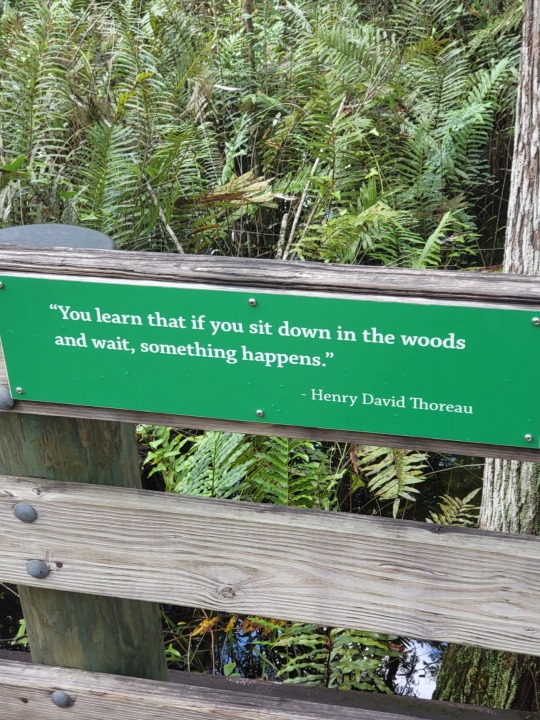
The boardwalk also consisted of many different signs that had quotes that related to nature. My favorite quote was by Henry David Thoreau. Henry David Thoreau said, "you learn that if you sit down in the woods and wait, something happens." I instantly related to this quote because it reminded me of my own personal experiences. When I have sat in nature in the past, I have seen many beautiful animals. I have had dolphins, deer, and even foxes approach me while I am just relaxing in nature. This quote also reminded me of all the times I escaped into nature when I had too much on my mind. Whenever I have an important decision to make, I will just go out into nature, usually kayaking in the mangrove trees, and I will find a sense of clarity being out there.
Photo Credit: All of the photos in this post were taken by Bradley Hoberman.
0 notes
Text
Journal 2
Part 1: FGCU Sustainability Efforts
Florida Gulf Coast University (FGCU) not only teaches its students about the importance of the environment and sustainability, but the campus takes the extra initiatives to make sure that it is doing its part as well.
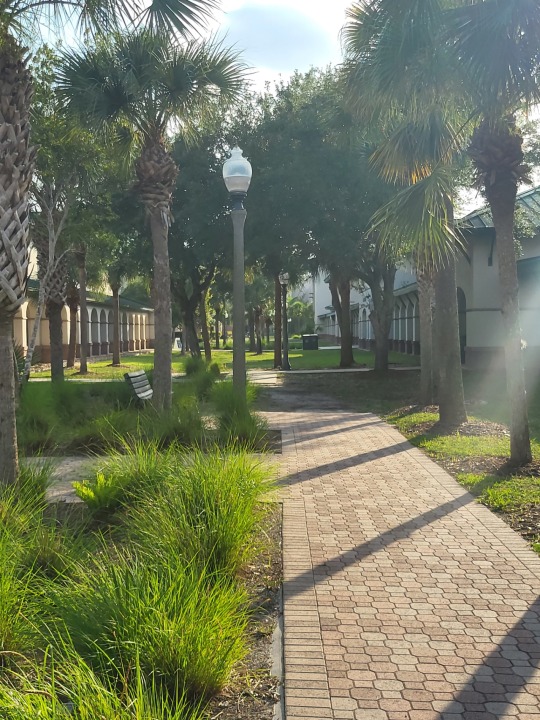
For example, FGCU practices xeriscaping. This means that FGCU only plants trees and shrubs that are native to the area. This limits the amount of landscaping FGCU needs to do, and they also do not need to add any fertilizer. This not only saves the school money, but it also does not harm the environment any further, since they do not need to use any chemicals. FGCU also takes the environment into consideration when they are designing its buildings. The breezeway that connects the majority of academic buildings is designed, so that it is naturally cooled with the wind. This ensures that no fans need to be installed that will waste electricity.
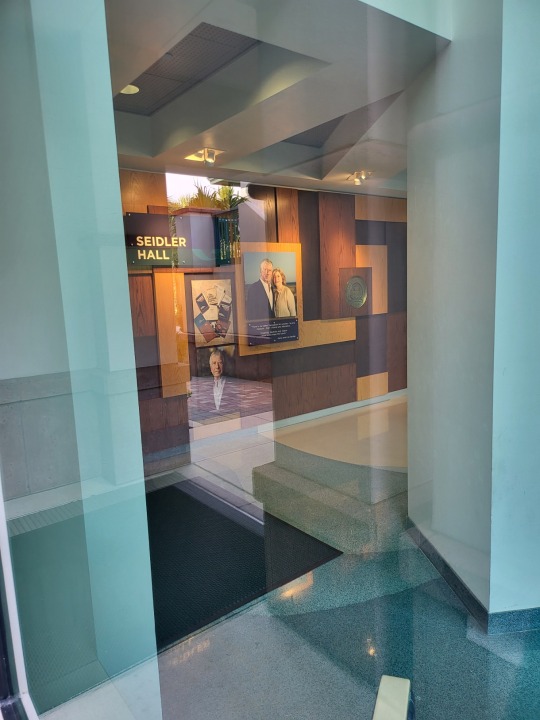
Additionally, the majority of the buildings on campus are LEED (Leadership in Energy and Environmental Design) Certified. Seidler Hall, which houses the majority of the science lab on campus, is LEED Platinum Certified, which is the highest certification you can get. The benefits of being LEED Certified include promoting a healthier environment, improved worker recruitment and retention, boost in public image, an asset to your corporate initiatives, lower utility costs, tax benefits, lower waste handling costs, better employee performance, and a positive ecological impact.
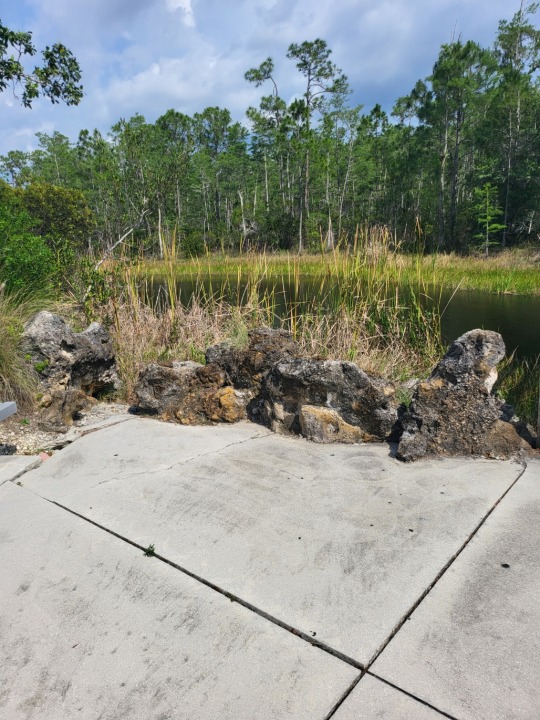
Most buildings on campus also do not have any gutters. This allows water to be dispersed naturally, so water is not forced into one location. FGCU also has a lot of retention ponds to that excess water will flow into. Even though all of the ponds on campus are man-made, FGCU did a wonderful job making all the ponds look natural.
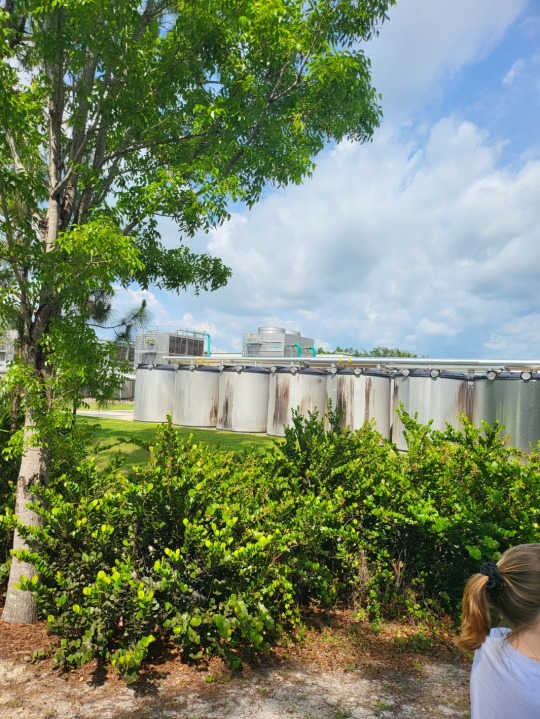
Instead of using a traditional air conditioning system, FGCU is home to the biggest chiller plant in Florida. The chiller plant freezes water overnight, and then during the day it slowly unfreezes the ice and circulates the cold water through the buildings to cool them down. Afterwards, the water is sent back to the chiller plant to be refrozen. FGCU's chiller plant can hold up to ten million pounds of ice, and it saves FGCU roughly $400,000 annually. Additionally, since it does not use chemicals like freon, if a pipe breaks it will not contaminate the environment.

FGCU has also placed solar trash compactors all around campus called big belly. These compactors are able to compile bigger loads, so trucks do not need to make as many deliveries. Since less trips need to be taken, that means that less fossil fuels need to be burnt to transport the waste.
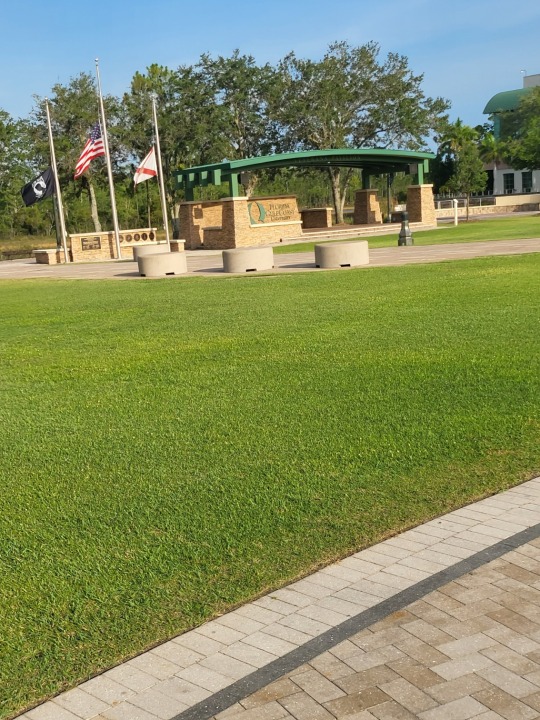
Not only does FGCU care about sustainability for the environment, but they also care about the sustainability of people and social justice. For example, FGCU donated one of its most important pavilions to veterans. FGCU understands how important it is to show our support for the men and women who fought to defend our country, and I agree that it was a great idea to put this memorial in the center campus. Additionally, FGCU named its library after its first African American president, Wilson G. Bradshaw. This is really important to memorialize, especially since even today, only about 17% of college presidents are not white.
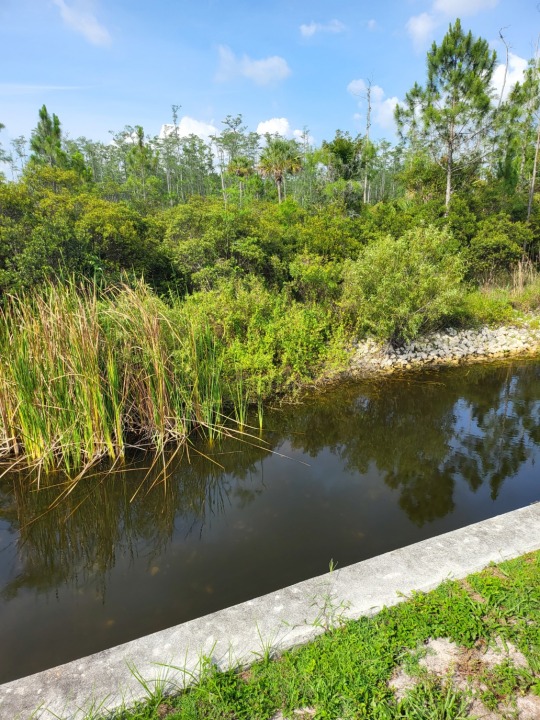
Finally, some of the land that is apart of FGCU is protected. That means that it can never be cut down or built on. This is especially important in Florida because 90% of the drinking water comes from underground. This means Florida need natural land to allow water to seep back underground to resupply the drinking water. This also means Florida needs to try to stay away from certain drilling techniques like fracking. If not done properly, the chemicals used in fracking can end up polluting the drinking water.
Part 2: Nature Trail Walk

On campus, FGCU has a nature trail that starts in a Pine Flatwood ecosystem. This kind of ecosystem has the highest elevation and is also the hottest in Southwest Florida.
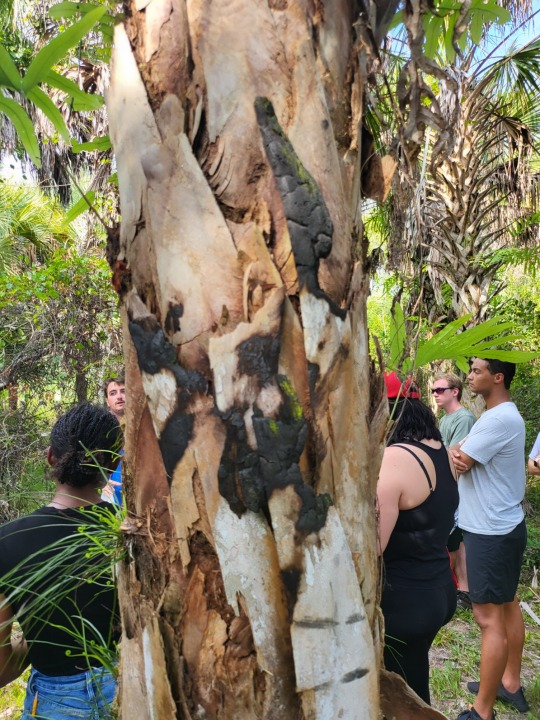
One thing that is unique about this type of environment is that fires are a natural part of the ecosystem. Pine Flatwoods are usually in a fire every three to five years. However, the trees bark is so dense that the fire cannot spread all the way up. FGCU has not had a fire since 2004, so it is overdue for one. The burn marks in the picture above are from the fire in 2004.
After the Pine Flatwood ecosystem, the trail dropped in elevation, and it turned into an Oak Hammock environment. This is the only elevation that Oaks can grow at. It is also a lot cooler so pioneers preferred to sleep in these kinds of ecosystems. This kind of ecosystems are also home to epiphytes. Epiphytes will float through the air and try to attach themselves to trees. Unlike parasites. epiphytes are good, and they do not harm what they attach themselves too.
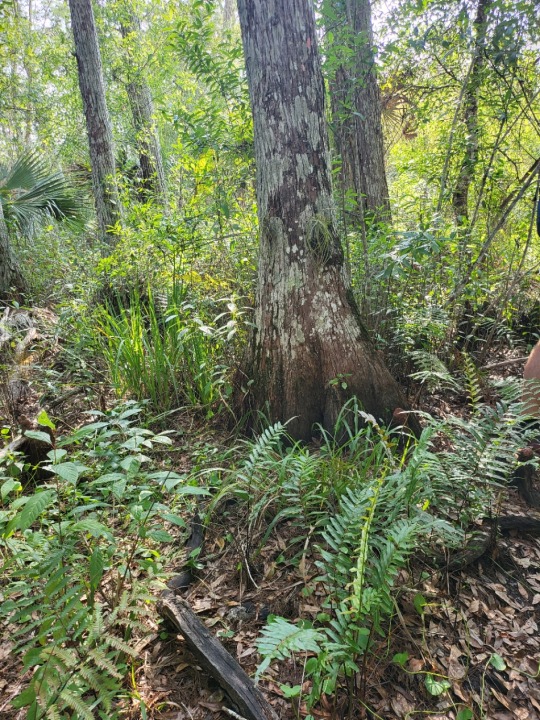
After the elevation continued to drop, we finally made it to the Cypress Dome Ecosystem. This ecosystem was a total of six feet below the Pine Flatwoods ecosystem. Since Florida is so flat, and its elevation is measured in inches since it gradually drops, it did not feel like I dropped that far in elevation. One thing that was really cool to see was that the all the trees had a wider base. This was to make sure that the tree will be stable while submerged in water, and it will not fall over. I learned about this in my Environmental Biology, however this was the first time I saw it in person.
It was also very relaxing when we just took a couple minutes to stand under some of the trees. This was the first time in a long time that I have been able to just turn my mind off. It was very refreshing to be given a chance to not think about everything that is going on in the world. Even though it was just for two minutes, I felt really relaxed after I was able to just enjoy the moment.
Part 3: Ecological Footprint
My ecological footprint is a 5.9. This means that if everyone on Earth lived like me, we would need 5.9 Earths to be able to have enough resources for everyone. This was very surprising for me to see. I knew that I did not live the most environmentally friendly lifestyle, but I never thought it was this bad. One area that I need to work on is transportation. I am constantly driving, and I also like to drive. Even though I find enjoyment in driving, I can still make the effort to take public transportation more often. I can also try to purchase an electric car, so that way I am not burning as many fossil fuels. Another area I need to work on is my eating habits. I eat meat with every meal, even though I do not have to for my diet. It actually may be unhealthy the amount of meat I eat. I need to take the extra initiative to limit the amount of meat that I eat, and I need to live a healthier lifestyle for the environment and myself.
Part 4: Conclusion
This field trip was very eye opening to me. I knew that I went to an environmental school; however, I had no idea how much my campus does in order to promote being environmentally friendly. This made me really happy to see, and it also makes me even prouder to say that I go to FGCU. As happy as this made me to be a student at FGCU, when I found out my own ecological footprint, it made me disappointed. I thought I was doing a better job of being environmentally friendly than I actually am. Even though I am disappointed in myself, I need to take this as a learning moment and not get discouraged. Instead, I need to start following FGCU's footsteps, and I need to start taking the extra initiatives wherever possible to become more environmentally friendly.
Photo Credit: All photos that are in this post were taken by Bradley Hoberman.
0 notes
Text
Journal 1
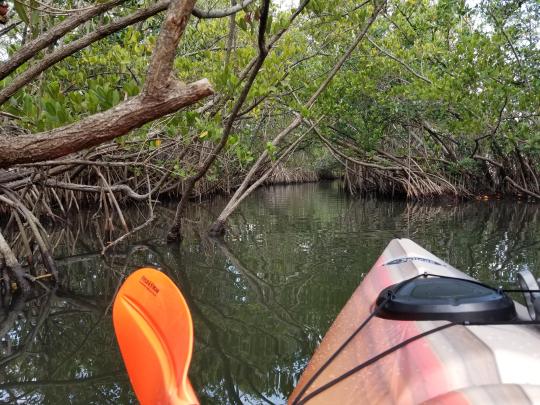
Photo Credit: https://www.reddit.com/r/Kayaking/comments/gjwl8w/mangrove_tunnel_in_florida/
My name is Bradley Hoberman, and I am a senior at Florida Gulf Coast University. I am currently studying Accounting, and I am anticipating on graduating at the end of this summer. Before I enrolled in Colloquium, I did not know much about the class. I knew that this class went on a lot of field trips, and it was about the environment. I know this class will touch on climate change and sustainability as well. I have learned a lot about climate change in the past, but I have not learned about sustainability yet. I am looking forward to finally learning about sustainability.
Even though it has only been the first week of class, I have already learned a lot about my classmates and myself. For example, this class has given me the chance to think about what my sense of place is. I have come to realize that my sense of place is being on my kayak, especially back in the mangroves. Being back in the mangroves is when I can finally escape the stress and chaos of the world. When I am in the mangroves, it is just me and nature. There is no one else around except for the birds and the fish. The peace and quiet is the perfect atmosphere for me to finally unwind. It also finally gives me the chance to personally reflect on any issues that I may be facing.
After discussing my sense of place with my group, I learned that we are all very similar. We all have different places that we like to go to, however we all go there for the same reasons. Whether it be at the beach or under an olive tree by the bus stop, when we are at our sense of places, it gives us a unique feeling that no other place can. Our places allow us to just solely focus on ourselves for a change. It was refreshing to hear that we all sometimes need to just escape and have some time for ourselves. I am glad that I now know about my sense of place, and I am not the only one who will feel overwhelmed at times. Working in public accounting can be a very stressful career, and when I do start to feel overwhelmed, I now know I can just escape to the mangroves to recharge.
1 note
·
View note